In the grand theatre of awe-inspiring landscapes, Mount Kilimanjaro stands tall and regally, captivating the heart of every adventurer. Scaling the highest mountain in Africa is a dream many adventurers hold.
Whether you’re a veteran mountaineer or an amateur hiker wishing to conquer one of the greatest natural wonders of the world, careful planning is crucial.
In this post you will find a comprehensive guideline for facilitating your journey up Kilimanjaro, offering insights on planning your itinerary, preparing yourself physically for the gruelling ascent, and packing efficiently for the climb.
Let’s dive right into the key considerations to make your trip to Kilimanjaro more than just an adventure, but a memory to cherish.
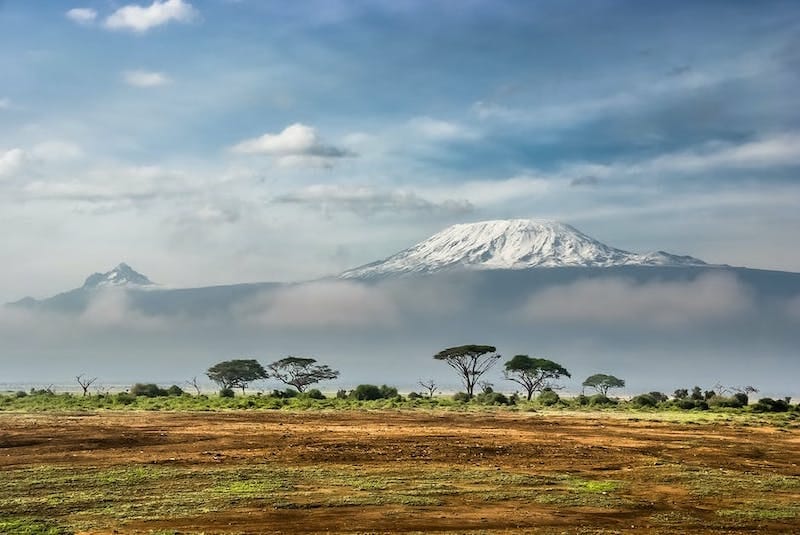
Table of Contents
How to Plan a Trip to Kilimanjaro
Where Mount Kilimanjaro is located?
Standing at an impressive 5,895 m (19,340 ft) above sea level, Mount Kilimanjaro is located in Tanzania, near the Kenya border, in East Africa, 386 km (241 mi) from Dodoma (Tanzania’s capital).
How to get to Kilimanjaro?
The closest airport to Kilimanjaro is Kilimanjaro International Airport (JRO), which is situated southwest of Mount Kilimanjaro National Park.
Alternatively, you can fly to Nairobi Airport (NBO), take another flight to Kilimanjaro and book a private transfer to Mosh.
You can book your flights with Skyscanner, which is the website that I trust, use and recommend.
What is the best time to climb Mount Kilimanjaro?
The dry season, spanning January to mid-March and June to October, it’s the best time to climb Kilimanjaro and remains the most favoured one.
However, if you want to save money on your trip, you might find the off-peak season appealing for fewer crowds and discounted rates.
- You may also like: Hiking Lion’s Head Hike, Cape Town
How much does it cost?
The cost of a trip to Kilimanjaro varies significantly depending on the time of year, the tour operator chosen and the kind of accommodation provided, whether you’re travelling solo or part of a group, and the city you’re flying from.
Other things to take into consideration are VISA, insurance (you need special insurance that covers high-altitude trekking up to 6000m), technical gear and clothing.
The average cost of a Kilimanjaro expedition is between 2000 – 3000 USD per person. It does not include international flights, personal gear rentals, lunch and dinner (before and after the climb) and tips.
When putting all the expenses together, your Mount Kilimanjaro trip can cost up to US$ 6000.
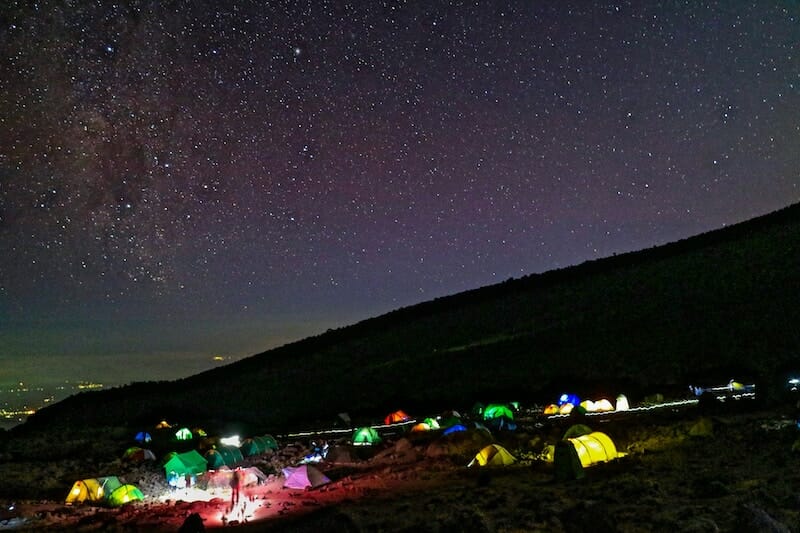
How to book a Kilimanjaro expedition?
A reputable climb operator is your best bet for seamless logistics and safety, not to mention round-the-clock support.
Selecting an operator who aligns with ethical climbing practices, respecting local porters’ rights and working towards environmental sustainability is a key.
I recommend booking an expedition with Altezza Travel. They are a member of the Kilimanjaro Porters Assistant Project, are involved in several initiatives to protect Tanzania wildlife, and have group tours every 2-3 days.
Choosing an Itinerary
Kilimanjaro boasts seven trails to the peak, each with its unique charm and challenges. For instance, the Marangu route is famous for its relative ease and comfortable huts, a perfect choice for beginners or those who like a dash of comfort on the trail.
Machame and Lemosho, on the other hand, offer breathtaking views and acclimatization benefits, suitable for hardened mountaineers willing to stretch their endurance levels.
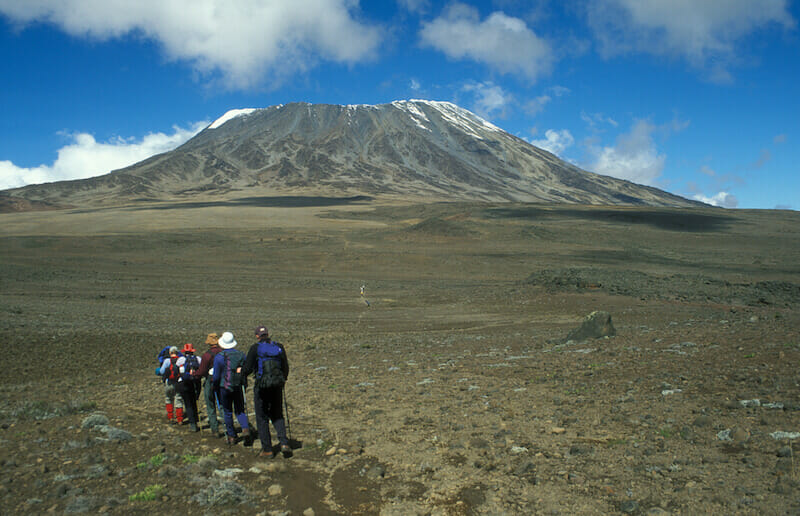
Getting Physically Prepared: Acing the Physical Preparation
One does not walk into the challenging terrains of Mount Kilimanjaro without a level of physical preparedness; it’s akin to heading into a lion’s den sans armour.
Since I’ve discussed journeying up Kilimanjaro, let’s dive deeper into how to condition the body for this adventure.
Fuel the Engine Right: The Importance of Nutrition
Venturing to scale the highest mountain peak in Africa requires sensible nutrition. Think of your body as an engine – to run smoothly, it needs high-quality fuel.
Begin by consuming a balanced diet, rich in complex carbohydrates, lean proteins, and healthy fats.
Increase caloric intake, keeping heart-healthy and fibre-rich options on the menu. Hydration cannot be emphasized enough, drink water adequately.
- Suggested read: 10 Tips for a Healthy Lifestyle
Strength Training: Because Stamina Matters
Muscle endurance is crucial for the strenuous Kilimanjaro climb. Engage in a fitness routine focusing on strength training, specifically targeting the lower body.
Regular workouts comprising squats, lunges, and step-ups, coupled with hill training, will condition legs for the long, uphill trek.
Include some upper body exercises too, to manage the rucksack better.
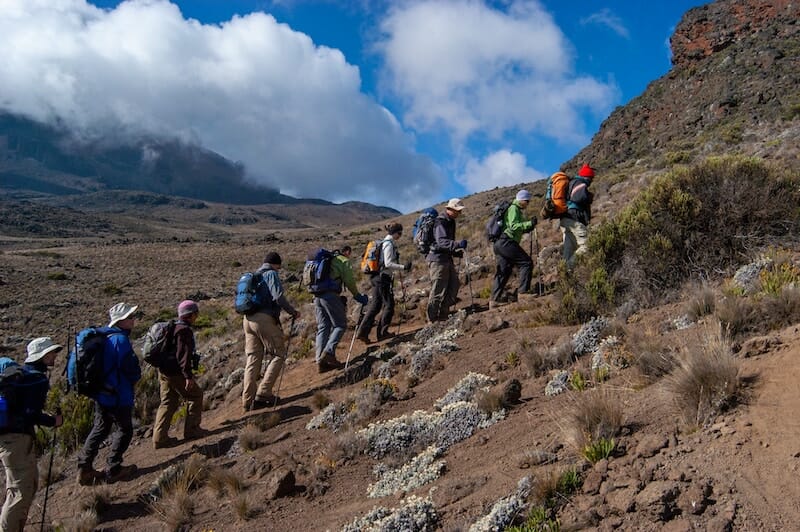
Cardio Fitness: The Heart of the Matter
Strong cardiovascular fitness aids significantly in dealing with altitude and the physical grind of climbing.
Consider incorporating activities such as jogging, cycling, swimming, or high-intensity interval training (HIIT) in your regime, gradually boosting frequency and intensity over time.
Altitude Training: Mimic the Mountain
Prepare for high altitude by training at increased elevations if possible. Otherwise, simulate the conditions by utilizing hypoxic training tools or facilities available.
This type of training increases red blood cell count and oxygen-carrying capacity, aiding in smooth ascension.
Flexibility and Balance: The Underrated Warriors
Flexibility and balance training often fly under the radar, but they’re invaluable when faced with uneven terrains and long descents.
Include stretching exercises and activities like yoga in your routine, giving those muscles the love they deserve.
Rest and Recovery: Your Secret Weapon
Quality rest and recovery play a pivotal role in physical preparedness. Adequate sleep, combined with regular rest days, allows the body to heal, adapt and strengthen.
Listen to the body’s signals and never push into injury territory.
Health Check-ups: Safety First
Last but not least, keep safety at the forefront by scheduling a thorough health check with a healthcare provider, addressing any concern that might arise during the climb.
Embarking on the Kilimanjaro journey is more than just wandering; it’s embracing an embodiment of nature’s grandeur, hence, prepare well.
You’re not just on some kaleidoscopic escapade; you’re headed on a quest of resilience, strength, and sheer grit.
Prepare the body well, for the majestic Mountain is waiting to greet you at the summit.
Let the climb inspire your mind while your well-prepared body ensures a memorable and safe journey to the top. Your Kilimanjaro tale is about to unfold beautifully!
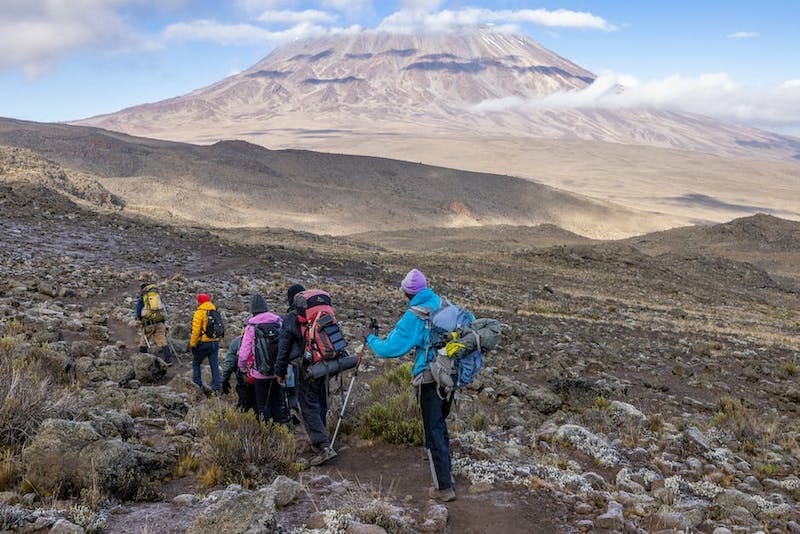
Packing for Trekking Kilimanjaro
The adventure of climbing Mount Kilimanjaro awaits and it’s crucial to be perfectly packed to fully enjoy this once-in-a-lifetime experience.
While the thrill of the journey lies in its unexpected twists and turns, it doesn’t hurt to be well-packed and prepared for that trek towards the peak.
Preparedness starts with packing essentials that ensure safety, and comfort, as well as quick and easy recovery.
One of the foremost essentials that climbing Kilimanjaro requires is appropriate clothing. Given that you will be progressing through drastically different climates ranging from tropical rainforest to arctic tundra, layering is key.
Think of thermal base layers, moisture-wicking clothing, and a waterproof shell. For the nights, insulated and down jackets can offer warmth. A good rule of thumb is to carry 3-4 layers for the upper body and 2 for the lower body.
Footwear should also get special attention. A good pair of sturdy, waterproof hiking boots with high ankle support, coupled with moisture-wicking socks is highly recommended.
Remember, it’s about comfort as well as functionality, so breaking in the boots before the climb is a wise move. Throw in a lighter pair of shoes or sandals for the camps.
Protecting against the elements must not be an afterthought. Mount Kilimanjaro’s harsh sunlight warrants the need for sun hats, sunglasses, and high SPF sunblock.
The climb will also take you through colder regions, where a beanie, gloves, and scarves will protect against freezing temperatures. Don’t forget a quality, waterproof bag to store and protect all your gear.
Hydration is paramount while climbing, especially when combating potential altitude sickness. Therefore, bring a hydration pack or water bottles that can carry at least 3 litres. And since liquid alone won’t cut it, high-energy, easy-to-carry snacks like nuts, dried fruits, and granola bars should come along for the journey.
As for the medical kit, it should be stocked with essentials like altitude sickness medication, painkillers, rehydration salts, plasters for blisters, and antiseptic wipes or sprays. Also, get a kit for basic grooming and personal hygiene.
While you’re busy marvelling at the stunning landscapes and focusing on the climb, it’s easy to overlook sleeping arrangements. A good quality, sub-zero-rated sleeping bag is an absolute must. For those valuing a bit more comfort, an inflatable pillow and a sleeping pad or mattress can set the base for a good night’s sleep. Both can be rented upon arrival.
Last but definitely not least is having light sources. A headlamp with extra batteries, or a solar-powered lamp will prove invaluable during the nights and early morning hours.
Embrace the adventure of Kilimanjaro with the right gear and the exploration will reward in ways unimaginable. Gear up, step out and let the mountain make memories for a lifetime. Happy climbing!
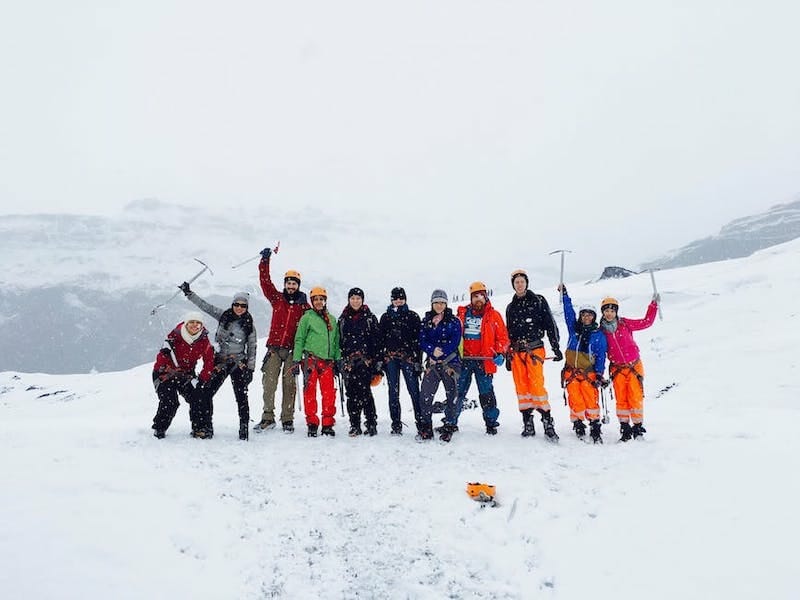
By following these guidelines, you are bound to have an unforgettable and rewarding experience on Mount Kilimanjaro.
Although the trip involves quite a bit of physical and mental preparation, the satisfaction of reaching the summit and witnessing the sunrise over the savannah is an experience you’ll cherish for a lifetime.
Thoroughly preparing for your journey not only safeguards your health and safety but also maximizes your overall enjoyment of this grand adventure. Always remember, it’s not the mountain we conquer, but ourselves.
Extra Tips For When Climbing Kilimanjaro
Finally, embracing the unknown is vital. Despite the most meticulous planning, expect the unexpected. Unpredictable weather, physical discomfort, or last-minute route changes might test your spirit, but remember, the true spirit of adventure weaves its magic from the unknown.
Go ahead, take this knowledge and swap daily hustle-bustle for the rhythmic chorus of your hiking boots taking you closer to the ‘Roof of Africa’.
I wish you ticking Mount Kilimanjaro off your bucket list with a wide grin on your face!
Safe travels and have fun climbing Kilimanjaro.
- Book Your Flight Find deals on airlines on my favorite search engine: Skyscanner. Be sure to read my How to find cheap flights article.
- Rent A Car Rental Cars is a great site for comparing car prices to find the best deal.
- Book Accommodation Booking.com is my favorite hotel search engine. But Hotels.com and Hilton Hotels have very interesting reward programs.
- Protect Your Trip Don’t forget travel insurance! I always use World Nomads for short-term trips and SafetyWing for long-term ones. Find out why Travel Insurance: Much More Than a Precaution, a Necessity.
- Book Tours in Advance Book unforgettable experiences and skip-the-line tickets with GetYourGuide or Viator .
- Book Ground Transportation BookaWay offers a stress-free experience with secure payments and no hidden fees. You pay online and receive your itinerary by email.
- Luggage Solutions Rent your luggage with Cargo or if you need to drop off your own luggage and enjoy your time without dragging it all over a city, find a LuggageHero shop here.
- Get a Travel Card Revolut Card is a pre-paid debit card that enables cash machine withdrawals in 120 countries. I’ve been using my Revolut Card for over a year and never paid foreign-transaction fees again. Get your Revolut Card with free shipping here.
- Packing Guide Check out my How to Pack a Carry-on Luggage For a Five-month Trip to help you start packing for your trip. Don’t forget your camera, chargers and other useful travel accessories. World Nomads provides travel insurance for travelers in over 100 countries. As an affiliate, we receive a fee when you get a quote from World Nomads using this link. We do not represent World Nomads. This is information only and not a recommendation to buy travel insurance.
